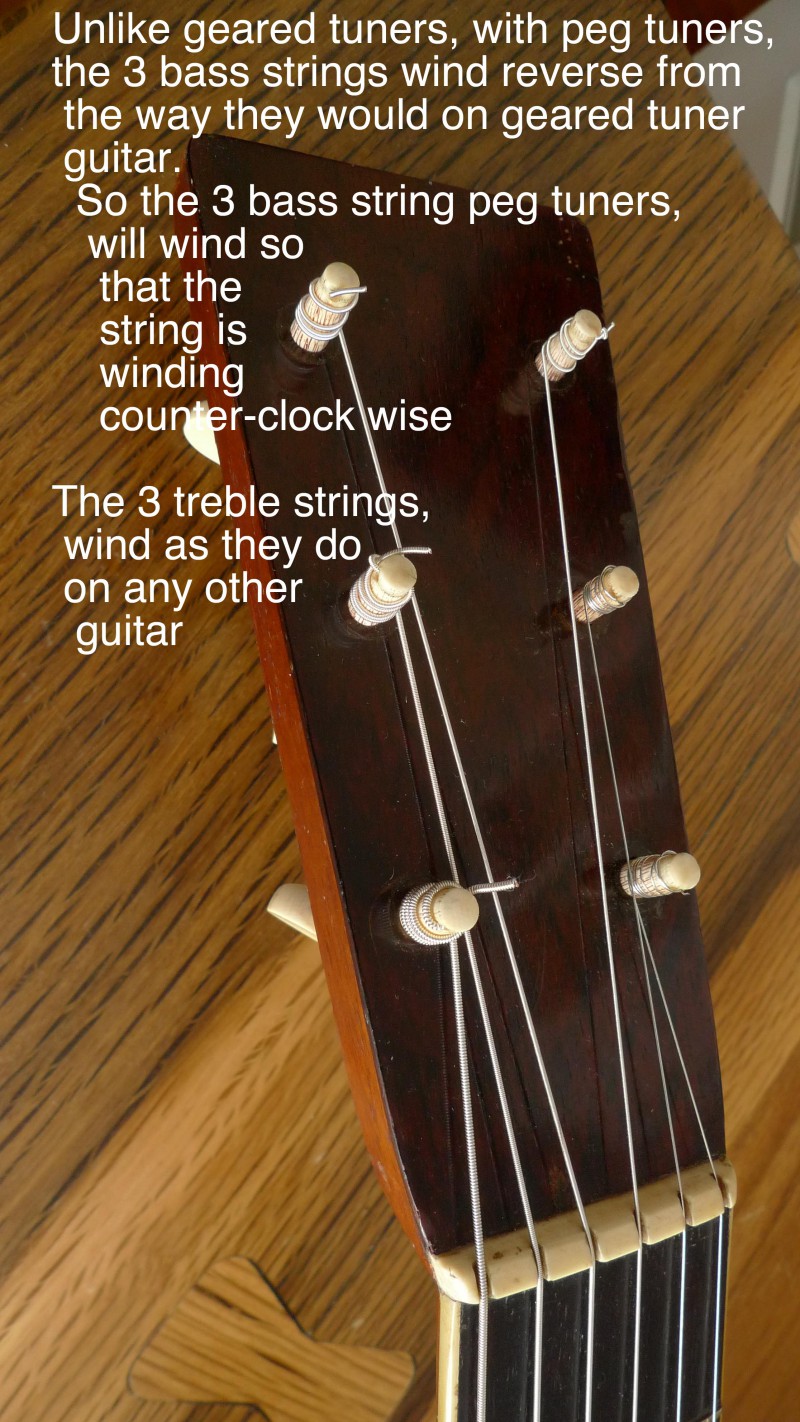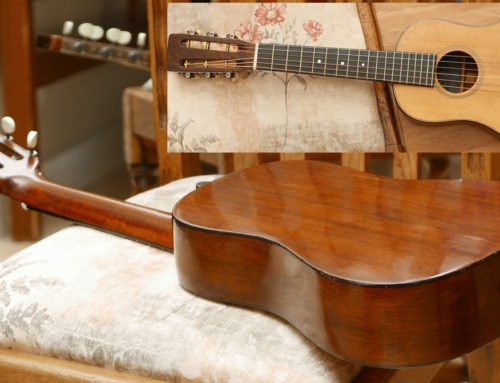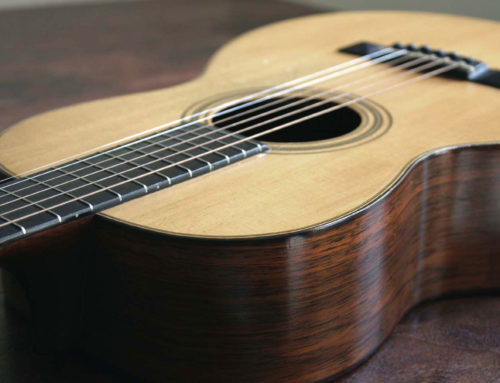Many 19th century Martin Guitars came from the factory with either ivory or ebony tuning pegs, like a violin (as opposed to geared tuners like modern guitars).
Early Martins often had ebony pegs. But many of the 1850- 1890’s Martins had beautiful ivory tuning pegs. If you take the time to learn to properly tune these, you will love the result.
What makes the tone of smaller-bodied vintage Martins guitars so great– so resonant, so “woody”, so dry and pure– is in fact the lightness of build of these earlier Martins: less weight, on every part of the guitar translates to a better sounding guitar. Keep this in mind when playing a 19th century Martin with Ivory tuning pegs. The first thing you’ll notice when you play such an instrument is that it’s even lighter in weight than other 19th century guitars. In fact, the lack of metal, geared tuners on these Martins means that the head of the guitar doesn’t weigh your left hand down. The neck, and head, and indeed the whole guitar just floats in your hands, as if– were you to release your grip– the guitar would float up toward the ceiling. No other vintage guitar gives this effect, the weightlessness and delicacy of touch, that an Ivory-pegged early Martin does.
But you must tune these guitars with the proper technique.
See the illustrations and text on the following pages for a guide.
1) First: see photo above: note that on any guitar with pegs (including modern flamenco guitars), the 3 bass strings will wind around each peg counter-clockwise (not clockwise), so that you will tune the 3 bass strings with a reverse motion of what you use on a normal geared-peg guitar. (The 3 treble strings wind around as on any guitar.) So you tune the 3 bass strings counter-clockwise; and you tune the 3 treble strings clockwise (looking at peghead from above).
Winding the strings on the shaft:
2) You must avoid having each string “pull” on the shaft of the peg toward the top of the peg. Rather, you must wind the string down the shaft so that when the string “leaves” the peg toward the nut, the string is pulling on the bottom (fatter) part of the shaft. (see photo above). This to prevent the ivory peg breaking.
Starting the tuning process:
3) Once strings are on, loosely, and the strings are oriented properly (see “Winding” in step 1), start the process of tightening down the pegs. See the photo immediately above: Sit in a chair, and put the bottom of guitar on the floor, with the guitar between your knees, as in photo above. Hold the top of neck/fretboard/nut area FIRMLY with your right hand. With your left hand, push each peg in to where it’s very tight. Still keeping the guitar’s bottom/end-pin resting on the floor, you can reach down and pluck an individual string to know when you’re getting the pitch close. Do NOT turn the pegs, to tune a string, unless you are counter-pressing the top of fretboard/nut area with your right hand.
You never want to try to tune the peg unless your right hand is stabilizing the neck by the nut area. See picture below, this is the WRONG Way:
4) Once you have the strings tightened up a bit, using the guitar-holding position in step 2 above, then you can place the guitar in your lap as you would normally do. But do NOT tune as in the picture directly above. Rather, tune each string as in the photo below:
Of course, you’ll have to move your right hand back to the soundhole of the guitar, to pluck a string and see if it’s in tune yet. But then move your right hand back to the nut, and hold the fretboard/nut area firmly while you tune the peg. You’ll have to still make sure the tuning peg is in tight.
The process above will take some time getting used to. But no other vintage Martin sounds as pure and floats in your hands like an ivory-peg Martin.








Leave A Comment